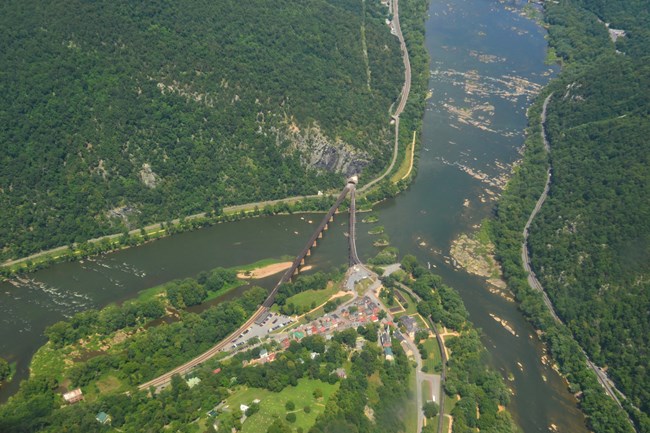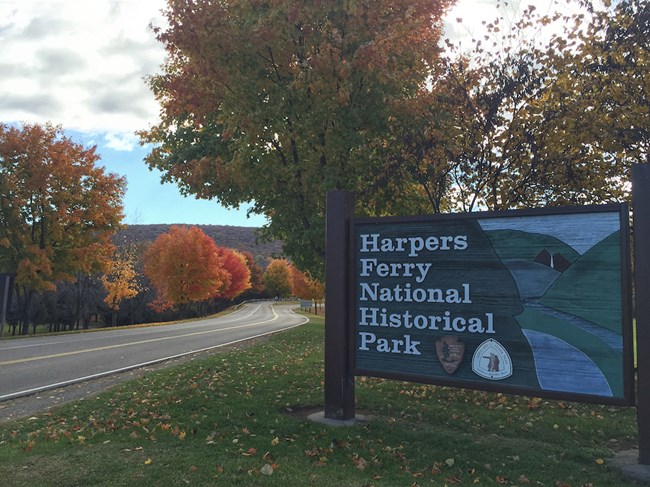SummaryHarpers Ferry National Monument was authorized by an act of Congress on June 30, 1944, and became Harpers Ferry National Historical Park on May 29, 1963 (Public Law 78-386) (see appendix A).
NPS Photo/Volunteer H. Mills The last general management plan for the national historical park was completed in 1980. Much has changed since 1980 -- visitor use patterns and types of use have changed, people want to bring new recreational activities to the national historical park, and an additional 1,240 acres was authorized for addition to the national historical park in 2004. Each of these changes has implications for how visitors access and use the national historical park and the facilities needed to support those uses, how resources are managed, and how the National Park Service (NPS) manages its operations. A new plan was needed to:
The PlanThe approved plan will provide greater visitor enjoyment, increased access to park locales, more varied interpretation, and new life and excitement to Harpers Ferry National Historical Park.
NPS Photo/A. Cook Leaving their personal vehicles at the Harpers Ferry NHP Visitor Center parking lot, visitors can ride the transportation system to Lower Town where visitors will be immersed in a 19th century environment. Preserved historic buildings, period shops, exhibits, and outdoor furnishings will complement the interpretation provided by rangers and possible period artisans/ demonstrators who will bring life to this area. Traveling exhibits will be sought to supplement interpretation provided in the park. A smaller information center and bookstore will remain but possibly in new locations. Park artifact storage will be removed from the historic structures, and the space will be converted to office use or other types of storage. 
NPS Photo/Volunteer K. Simmons The armory canal will be restored and re-watered, with the turbine also restored for interpretive purposes. The power plant will be rehabilitated for exhibits. Virginius Island and Halls Island will be preserved as an archeological preserve, with ruins stabilized and outlined and wayside exhibits explaining the history and industrial development that was here. Camp Hill will be managed with a campus atmosphere reminiscent of the Storer College era. Additional signs and waysides will allow visitors to get the feel of the site. Museum exhibits now in Lower Town will be moved to one or more of the Storer College structures to better explain the importance of Harpers Ferry to the story of the civil rights movement in America. Several historic buildings from the military occupation of Camp Hill will be restored and adaptively used for park headquarters. The historic Shipley School on Camp Hill will be made available for rehabilitation by a proposed public/private partnership to allow its preservation and use. Implementation of the PlanThe approval of this plan does not guarantee that the funding and staffing needed to implement the plan will be forthcoming. The implementation of the approved plan will depend on future funding, and it could also be affected by factors such as changes in NPS staffing, visitor use patterns, and unanticipated environmental changes. Full implementation could be many years in the future. Additional feasibility studies and more detailed planning, environmental documentation, and consultations will be completed, as appropriate, before certain actions in the plan can be carried out.Future program and implementation plans, describing specific actions that managers intend to undertake and accomplish in the national historical park, will tier from the desired conditions and long-term goals set forth in this general management plan. |
Last updated: December 4, 2017
